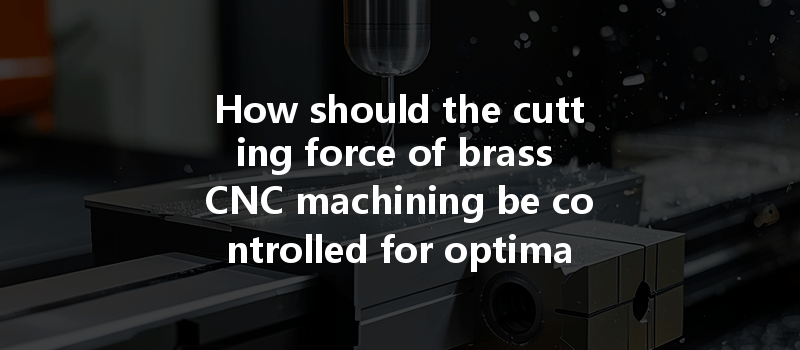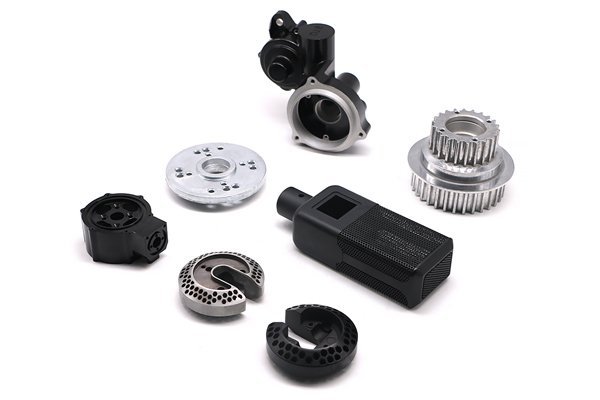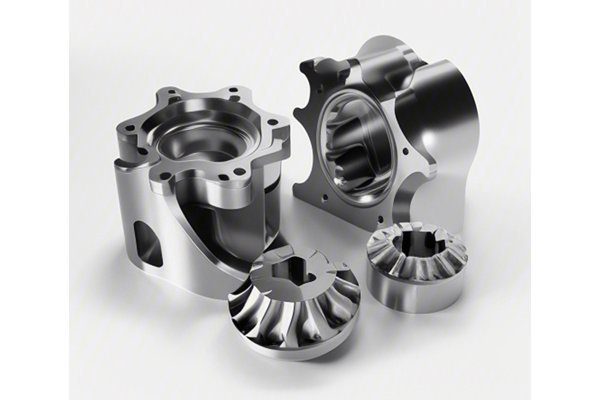Did you know that CNC (Computer Numerical Control) machining can achieve tolerances as tight as ±0.001 inches? This precision is not just a technological marvel; it relies heavily on how well the cutting forces are controlled during machining. For industries such as aerospace, automotive, and electronics, understanding and managing these forces can significantly affect the quality and longevity of both the machine tools and the workpieces.
When it comes to machining brass, a material known for its excellent machinability and thermal conductivity, achieving optimal cutting force is crucial for several reasons. Let’s explore the intricacies of controlling the cutting force in brass CNC machining and how it can amplify both performance and efficiency.
Understanding Cutting Force in Machining
To delve deeper into the specifics, let’s first cover what cutting force actually is. Cutting force can be defined as the force required to deform and remove material from a workpiece during machining. It is a critical parameter that influences:
Types of Cutting Forces
In CNC machining, the cutting forces can be categorized mainly into:
As we proceed, we will discuss how to measure these forces, the critical factors influencing them, and practical steps one can take to control them effectively.
Factors Affecting Cutting Force in Brass CNC Machining
Understanding how to control cutting force begins with a comprehensive grasp of the factors that influence it. Here are some key aspects:
Brass is known for its exceptional machinability, which can be attributed to its composition—primarily copper and zinc. The percentage of alloying elements can affect hardness and ductility, altering how the material reacts under cutting. Higher zinc content generally means better machinability.
Solution: Select the right alloy based on the desired cutting conditions.
The design of the cutting tool, including its geometry, material, and coating, can dramatically affect cutting forces. For brass, using a sharper cutting edge can reduce cutting resistance, optimizing performance.
Solution: Invest in high-quality tools with favorable geometry suited for brass.
The speed at which the cutting tool advances into the material can significantly affect cutting force. For brass, cutting at an optimal speed reduces friction and effectively disperses heat.
Solution: Research optimal cutting speeds for brass and adjust your CNC settings accordingly.
In any machining process, the depth of cut is crucial. A deeper cut generally results in increased cutting forces and can strain the tool.
Solution: Balance between productivity and tool life by optimizing DOC for your brass parts.
Increasing the feed rate enhances material removal but may lead to excessive force. On the other hand, a low feed rate can lead to dull tools and increased temperatures.
Solution: Find a sweet spot that enhances productivity while ensuring manageable cutting forces.

Heat generated during machining can weaken the cutting tool and alter the properties of the brass. Effective cooling and lubrication can mitigate this issue.
Solution: Implement coolant techniques to lower temperatures and optimize tool performance.
Measuring Cutting Forces in CNC Machining
To control cutting forces effectively, it is essential to measure them systematically. Techniques for measuring include:
Practical Steps for Measuring Cutting Forces
Techniques for Controlling Cutting Forces
In order to optimize cutting forces in brass CNC machining, specific techniques can be employed:
Always research and apply optimal cutting parameters based on material, tool, and machine. Adjusting based on historical data can provide a solid foundation for controlled machining processes.
Modern CNC machines feature adaptive control systems that can adjust speeds and feeds in real-time based on cutting conditions.
Tool materials with advanced coatings can withstand higher forces and temperatures, leading to longer tool life.
Routine checks and maintenance on CNC machines help ensure they operate within the desired parameters. Keeping axes aligned and the spindle balanced can reduce unnecessary cutting forces.
The longer the tool extends from the spindle, the more deflection and cutting force exert upon it. Reducing this overhang can increase stability and reduce forces.
Practical Case Studies
Case Study 1: Aerospace Component Manufacturing
Company A, specializing in aerospace components, faced challenges with excessive tool wear while machining brass fittings. By implementing optimal cutting speeds and a high-quality coated tool, they managed to reduce cutting forces by 25%. This move extended tool life and reduced scrap rates by 15%.
Case Study 2: Automotive Parts Production
Company B was notorious for long lead times due to machining errors when producing brass brackets. By systematically measuring and adjusting cutting forces through the implementation of real-time force monitoring, they improved consistency, shortening production cycles by 30%.
The complexities of controlling cutting force in brass CNC machining cannot be understated. Factors such as material properties, tool geometry, depth of cut, and even environmental factors like cooling and lubrication play pivotal roles in determining success.
By adopting systematic measurement techniques, optimizing cutting conditions, and employing advanced technology, manufacturers can improve productivity, extend tool life, and minimize errors.
It is imperative for manufacturers to not merely acknowledge these factors but actively integrate them into their machining processes. The stakes are high—success in CNC machining can differentiate between high-quality products and those plagued by defects and inefficiencies.
Understanding how to control cutting forces in brass CNC machining isn’t just a niche topic; it’s a fundamental concern that can elevate a company’s output and reputation within competitive industries. Remember, effective cutting force control translates to improved quality, reduced costs, and heightened customer satisfaction. So, as you embark on your CNC journey, keep these principles in mind, and you’ll be well on your way to optimal machining performance.






